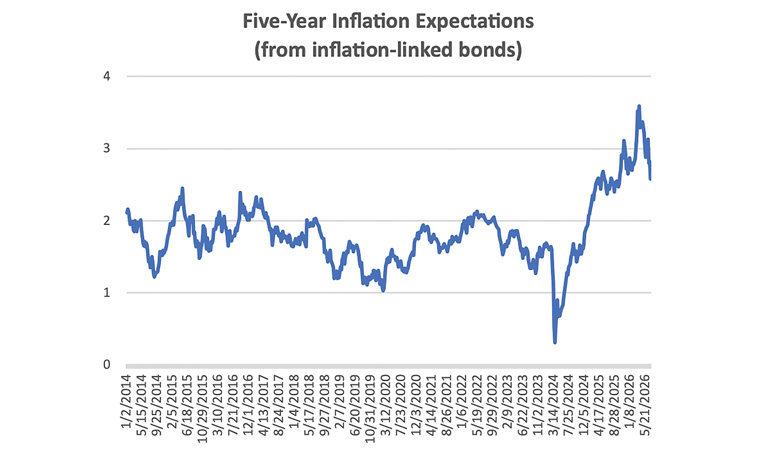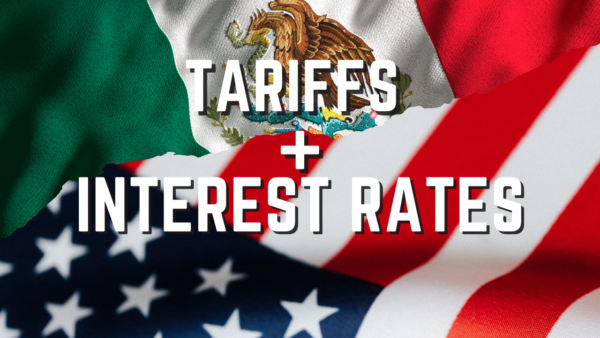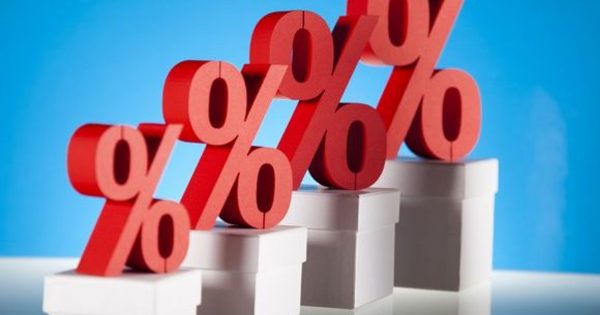An increasing number of factors indicate that the economy is slowing.
The Federal Reserve’s Open Market Committee (FOMC) announced a 0.75% increase in the fed funds rate on June 15, taking its target range to 1.50% to 1.75%. In total, it raised interest rates by 1.50% and it indicated it was likely to raise rates another 1.50% in the second half of the year. This reflects the Federal Reserve’s greater sense of urgency in the face of adverse inflation data. The Federal Reserve’s actions risk tipping the economy into a recession, but Chairman Jerome Powell and other Fed officials indicate this is a risk they are willing to take.
The May data on consumer spending and industrial production indicates that the economy is already slowing. The stock market suffered its worst first half since 1970, with the S&P 500 down roughly 20% from record levels at the start of the year through June 30, 2022. Technology stocks have fared even worse, helping to drag the NASDAQ down by 30%. At the same time, however, it should be noted that the declines in equity prices in the first half of the year reverse only a fraction of the massive gains seen in recent years. Moreover, house prices continue to appreciate sharply. These increases in the financial wealth of households will impart a certain amount of resiliency to the economy. In my judgment, the odds of a recession within the next year are approaching 50%, but it will probably take additional declines in equity prices to produce one.
If we look at the trailing three years, the S&P 500 is up 28% from June 2019. During the same period, the median price of existing homes sold has risen by 42%. It is instructive to compare past situations during which movements in asset prices contributed to a recession. The “dot com” or “tech” bubble peaked in March 2000 (at that point the NASDAQ had risen by 165% over a two-year period). By March 2001, all the gains of the prior two years had been wiped out. Not coincidentally, a recession set in that month. The current situation is different in that the drop in equity prices in the first half of this year has only reversed a fraction of the gains from the prior two and a half years.
The current situation is also different from the 2001 recession in that the gains in equity prices have been augmented by very large increases in house prices. And no reversal in house prices has set in yet.
Looking at the next bubble in asset prices, during the aftermath of the housing bubble, house prices fell a total of 26% from October 2005 to April 2009 (using data from the National Association of Realtors series on the median price of existing homes sold each month). Not surprisingly, the result was a financial crisis and a severe recession that began in January 2008.
While this year’s declines to date in financial asset prices do not come close to matching those seen ahead of the 2001 and 2008 recessions, there are other factors weighing on the economy. Growth abroad has been slowing, with Europe particularly affected by the Russian war with Ukraine. The boost in spending due to people catching up on activities foregone during the height of the pandemic appears to have mostly played out. In addition, the support from last year’s fiscal stimulus package has been gradually diminishing. Finally, wages have not kept up with inflation. In the past two years, average hourly earnings have increased by 9.3%, but consumer prices have gone up an even steeper 13.6%.
Given this constellation of forces, it is not surprising to see an increasing number of indications that the economy is slowing. Consumer spending fell by 0.4% in May after adjustment for inflation.
Manufacturing output dipped 0.1% in May after growing an average of 1.0% per month in the prior three months. There is always a certain amount of volatility to monthly data and those developments likely overstate how much the economy is slowing. While the overall signal being sent by the data is that the economy is slowing to some extent, we don’t appear to be at the point of a recession, but it would not take much to get there.
One reason for hope that a recession could be avoided is the recent slide in commodity prices. If the Federal Reserve thinks that inflation is coming down on its own accord, it will likely raise interest rates less than it has recently indicated. The prices for a wide range of commodities, including oil, natural gas, corn, wheat, and lumber, have declined over the course of the second quarter, and this trend intensified in early July.

Of course, some of these declines reflect weaker demand due to the economy slowing down. Even so, the Federal Reserve may take comfort that this is a part of a general lessening of inflationary pressures. The inflation expectations that can be calculated from inflation-linked bonds have been dropping. A good measure of medium-term inflation expectations is those derived from five-year bonds. By the end of June, these bonds were pricing in an expectation that inflation as measured by the Consumer Price Index would average slightly above 2.5% over the next five years. This is down substantially from a peak of over 3.6% in late March. As the graph shows, however, it remains at a level somewhat above the range that prevailed prior to the rise in inflation that began last year.
The decline in commodity prices and inflation expectations embedded in inflation-linked bonds provides some evidence that the Federal Reserve’s tough message has already had some success in breaking the inflation fever that had been gripping markets and the economy. With a little luck, this may provide the Fed room to pursue a less aggressive course of hiking interest rates. In turn, this could allow equity prices to stabilize near the current level. Under such a scenario, a recession could be avoided.
However, the odds of a gloomier scenario involving a recession have clearly risen. In this scenario, some elements of inflation, mostly those related to the housing market, remain high enough to persuade the Fed to hew to the aggressive tightening path that it has laid out. This would provoke additional declines in equity prices and eventually a correction in house prices as well. Additional volatility and price declines in financial markets could produce psychological shocks to consumer and business confidence. Such psychological shocks are difficult to calibrate in terms of their effects on the economy. The downside risks to the delicate calibration the Fed is carrying out should not be underestimated.
_________________________
To become a subscriber, visit www.thecannatareport.com/register or contact cjcannata@cannatareport.com directly. Bulk subscription rates are also available upon request and included in our media kit.





